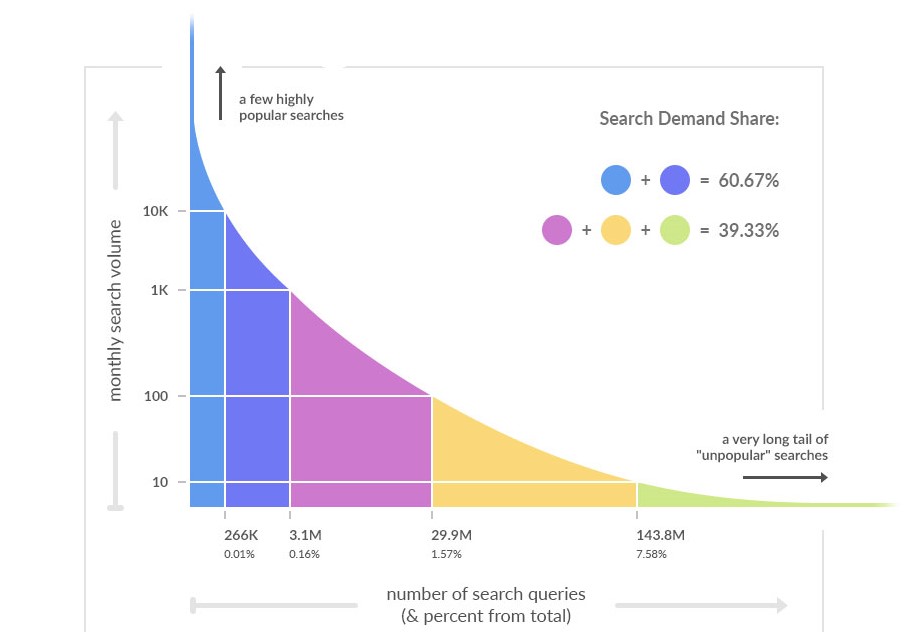
The Long Tail is still one of the most disruptive ideas in business.
These days, the Long Tail is mostly discussed by SEO and search marketing geeks, or Amazon entrepreneurs. Some businesses have forgotten, or never really worked out the opportunities to be had by thinking about digital business models coupled with the Long Tail.
The Long Tail is fundamental to understanding key drivers within your business. From popularity to personalisation, from volume and frequency to relevance and price elasticity.
What is the Long Tail?
Let’s go back to a beginning – to when Amazon was a bookshop, to when books were primarily physical goods and when shops were finite spaces. It seems obvious now, but there are only so many books that can fit in a bookshop, but there are millions of book titles that are still ‘wanted’ by readers.
A bookshop owner needed to balance the POPULARITY of a title against other factors, like understanding a specific market. In a physical store, because of the constraints, factors like MARGIN of a title might also factor into which books were stocked and which ones weren’t.
The graph above is based on the sale of ‘words’ in a different form, – words that trigger ads rather than words printed in books, but the concept is the same. On the vertical axis you have a measure of current popularity, on the horizontal axis you have all the possible combinations or titles available.
In the book example, titles that sell a high volume and sell regularly – a book like ‘Harry Potter and the Philosophers Stone’ or ‘The Hobbit’ are at the top of the graph – The Head Tail – and a book like ‘The Diamond Age‘ by Neal Stephenson would be a Long Tail product.
Another way to look at it is that the products in blue are current and / or mass market products and the ones in yellow or green are either old mass-market products or niche products.
Long Tail and Strategy
Even brands that sell virtual goods need to understand the Long Tail. While Netflix could have infinite inventory, they still have to pay to create it or buy it. What delivers better return in investment – a new series of House of Cards or buying the entire back catalogue of Friends?
Using data, decisions need to be made.
- Play at the top of the tail, in the mass market, where competition is fierce, perhaps margins are lower but volumes are higher?
- Or move down the curve where, volumes are lower, but maybe there is room to charge higher prices and reduce acquisition costs. As you move down the curve, you also become more relevant.
It really doesn’t matter what industry or market you are in. This is a decision that has to be taken.
Believe it or not, there are industries and markets that haven’t really considered the Long Tail – at least not from a product point of view.
They might be thinking about multiple buyer personas and personalisation for marketing purposes, but new products for customers in the Long Tail are not being brought to market and existing products are not being adapted.
This creates opportunity for disruption.
A recent example of this is the “Buy Better, Less Often” concept, which is a strategy that has been adopted by several ‘disruptive’ companies.
The Long Tail is a core concept in many of our Training Courses.
